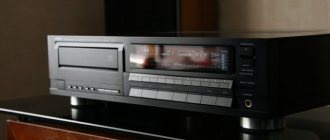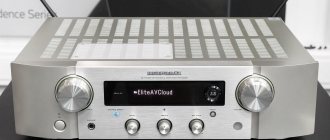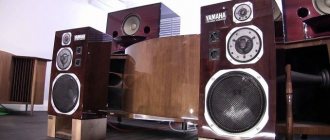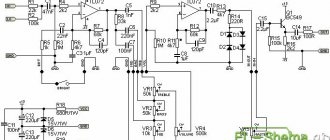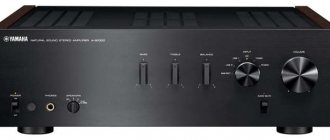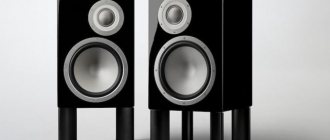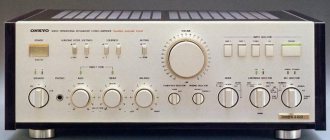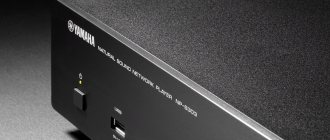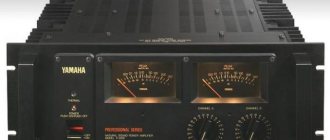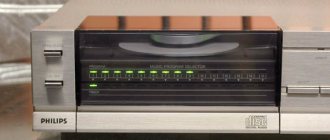Yamaha R1 1998-1999
In 1997, the newly launched Yamaha R1 was called “The most furious bike of this century.” Speaking of the 1998-1999 model, we can add that it took supersports to a new level, eclipsing the Honda FireBlade, Kawasaki ZX-9R and even the Ducati 916SPS. At that time, it had everything a modern sportbike needs, and even more.
Sportbikes now
Since then, technology, including motorsports technology, has made significant strides forward. Sportbikes now produce 200+ hp. and are equipped with space-age electronics. Compared to these modern rockets, which are getting smaller and lighter every year, the R1 feels quite large, with a relatively roomy seating position and not too much strain on the arms.
Directly below the rider's head is a sleek metal tank. No angular plastic, the lines of the motorcycle are simple and smooth, which is good. The stock equipment is quite quiet and produces a weak, almost imperceptible hum when turning the throttle. The instrument panel is simple and easy to read. A large analog tachometer sits next to the digital speedometer, which also displays the odometer or tripmeter.
Yamaha R1 engine
The Yamaha R1's clutch releases with a soft, soothing force, and first gear slips into gear easily and precisely. The 20-valve 998cc inline-four is smooth and smooth - one of those engines that makes going fast too easy. Torque is distributed smoothly across the entire rev range, but the engine comes to life at 10,000 rpm and right up to the redline at 11,500. Despite the known problems of some examples, the gears of our sample engage smoothly and reliably. He definitely doesn't look twenty years old.
Brief history of the model
- 1998 - start of production and sales. First generation
.
Model
: Yamaha YZF-R1 (Europe, North America, Japan, Australia).
Factory designation
: 4XV5, 4XV4, 5EG1, 4XV2, 4XV1, 4XV6.
- 1999 - no significant changes.
Model
: Yamaha YZF-R1 (Europe, North America, Australia).
Factory designation
: 4XVB, 4XVA, 5EG2, 4XV8, 4XV7, 4XVC.
- 2000 - restyling of the model. Second generation
.
Model
: Yamaha YZF-R1 (Europe, North America, Australia).
Factory designation
: 5JJ5, 5JJ4, 5JJ2, 5JJ1, 5JJ7, 5JJ6.
- 2001 - no significant changes.
Model
: Yamaha YZF-R1 (Europe, North America, Australia).
Factory designation
: 5JJG, 5JJF, 5JJD, 5JJC, 5JJ9, 5JJ8, 5JJA, 5JJH, 5JJE.
- 2002 - restyling of the model. Third generation
.
Model
: Yamaha YZF-R1 (Europe, North America, Australia).
Factory designation
: 5PW5, 5PW4, 5PW2, 5PW1, 5PW6.
- 2003 - no significant changes.
Model
: Yamaha YZF-R1 (Europe, North America, South Africa, Australia).
Factory designation
: 5PWB, 5PWE, 5PWA, 5PWD, 5PW8, 5PW7, 5PWF, 5PWC.
- 2004 - restyling of the model. Fourth generation
.
Model
: Yamaha YZF-R1 (Europe, North America, South Africa, Australia).
Factory designation
: 5VY5, 5VY4, 5VY2, 5VY1, 5VY3, 5VY6.
- 2005 - no significant changes.
Model
: Yamaha YZF-R1 (Europe, North America, Japan, Australia).
Factory designation
: 5VYB, 5VYA, 5VY8, 5VY7, 5VYC, 5VYD.
- 2006 - restyling of the model. Fifth generation
.
Model
: Yamaha YZF-R1 + R1S (Europe, North America, Japan, Australia).
Factory designation
: 4B15, 4B14, 5VYM, 5VYL, 5VYJ, 5VYH, 5VYS, 5VYF, 5VYR, 5VYE, 4B12, 4B13, 4B11, 4B16, 5VYN, 5VYK, 5VYT.
- 2007 - restyling of the model. Sixth generation
.
Model
: Yamaha YZF-R1 (Europe, North America, Japan, Australia).
Factory designation
: 4C85, 4C84, 4C83, 4C82, 4C81, 4C86, 4C87.
- 2008 - no significant changes.
Model
: Yamaha YZF-R1 (Europe, North America, Japan, Australia).
Factory designation
: 4C8B, 4C8C, 4C89, 4C88, 4C8D, 4C8E.
- 2009 - restyling of the model. Seventh generation
.
Model
: Yamaha YZF-R1 (Europe, North America, Japan, Australia).
Factory designation
: 14B4, 14B5, 14B9, 14B6, 14B1, 14BA.
- 2010 - no significant changes.
Model
: Yamaha YZF-R1 (Europe, North America, Japan, Australia).
Factory designation
: 14BC, 14BM, 14BL, 14BF, 14BG, 14BN, 14BN, 14BJ.
- 2011 - no significant changes.
Model
: Yamaha YZF-R1 (Europe, North America, Japan, Australia).
Factory designation
: 14BR, 1KB5, 1KB1, 1KB6, 1KB2, 1KB7, 1KB3, 1KBA, 45B2.
- 2012 - the model receives the TCS (Traction Control System) traction control system.
Model
: Yamaha YZF-R1 (Europe, North America, Japan, Australia).
Factory designation
: 1KBJ, 1KB8, 1KBL, 1KBM, 1KBE, 1KBF, 1KBC, 1KBB, 1KBN, 1KBG, 1KBD, 1KBS, 45B4, 45B3.
- 2013 - no significant changes.
Model
: Yamaha YZF-R1 (Europe, North America, Japan, Australia).
Factory designation
: 45B5, 1KBT, 1KBW, 1KBX, 1KBY.
- 2014 - no significant changes.
Model
: Yamaha YZF-R1 (Europe, North America, Japan, Australia).
Factory designation
: 45B6, 2SG5, 2SG1, 2SG9, 2SG7, 2SG8.
- 2015 - restyling of the model. Eighth generation
.
The appearance of a new modification - Yamaha YZF-R1M
.
Model
: Yamaha YZF-R1 + R1M (Europe, North America, Japan, Australia).
Factory designation
: BH31, 2KS1, 2CR1, 2KS5, 2CR5, 2KS4, 2KS3, 2CR3, 2CR4.
- 2016 - no significant changes.
Model
: Yamaha YZF-R1 + R1M + R1S (Europe, North America, Japan, Australia).
Factory designation
: BH32, 2KSC, 2CRJ, 2CRC, B603, 2KSA, 2CRN, 2CRG, B601, B602, 2KS9, 2KS8, 2CRL, 2CRM, 2CRE, 2CRF.
- 2017 - no significant changes.
Model
: Yamaha YZF-R1 + R1M + R1S (Europe, North America, Japan, Australia).
Factory designation
: BX4A, 2KSF, BX41, 2KSJ, BX44, B604, B605, 2KSH, 2KSG, 8X42, 8X43.
- 2018 - no significant changes.
Model
: Yamaha YZF-R1 + R1M (Europe, North America, Japan, Australia).
Factory designation:
BX46 + 2KSM.
- 2019 - no significant changes.
Model
: Yamaha YZF-R1 + R1M (Europe, North America, Japan, Australia).
- 2020 - minor changes to R1 and R1M (a full list of changes is presented above in the review).
Model
: Yamaha YZF-R1 + R1M (Europe, North America, Japan, Australia).
- 2021 - no significant changes.
Model
: Yamaha YZF-R1 + R1M (Europe, North America, Japan, Australia).
- 2022 - the appearance of the anniversary version of the Yamaha YZF-R1 World GP 60th Anniversary Edition.
Model
: Yamaha YZF-R1 + R1M; Yamaha YZF-R1 World GP 60th Anniversary Edition (Europe, North America, Japan, Australia).
R1 Suspension and Handling
The brake can be pressed with at least two fingers, but has excellent feedback. The suspension is great for fast, smooth roads, but on bumpy terrain the bike tends to get a little out of control and buck when accelerating over bumps. The bike does not cause any negative emotions: vibrations, knee pain or other unpleasant surprises when riding, and under the rear seat there is even a small glove compartment for snacks on the road.
Photo gallery
From our review you can find out how good this motorcycle is; the photo selection will perfectly complement the image you have formed.
Typical problems with Yamaha R1
The most common problem with them is first and second gears. The box is flimsy and either shifts too slowly, or the problems are due to improper use. Fortunately, this is easy to fix. The second problem is the EXUP valve getting stuck. If this happens, the tachometer needle jumps by 7000 rpm when the motorcycle is started and returns to the correct position.
Mechanic:
The main problems of the Yamaha R1 are stator failure and a weak gearbox in first and second gears . This is not a difficult job, so don't get fooled. Gear failure is the result of driving at the wrong speed, too fast or too slow for the lower gears. Moreover, more often wear occurs due to driving too slowly, oddly enough.
Check the wiring harness - the white connector near the clock and the head light connector. There, the power contact often oxidizes and the power to the headlights and tidy is lost.
The EXUP valve needs to be adjusted correctly, otherwise the tachometer needle jumps to 7000 - this is called tachometer tango, and generally speaking this is an error indicator.
The Yamaha R1 does not have an oil pressure sensor, but the one it does have measures the level. This is a float inside a plastic grill, and over time this grill becomes deformed from overheating. The float gets stuck inside, and this causes the oil level light to come on, even when there is plenty of it and the oil pump is working normally. We have never encountered an oil pump failure.
If the oil level light comes on, it means two things: either you are good at wheelies, or the float is stuck in the grill. In a later model, Yamaha redesigned this grille and made it metal, but it still sometimes heats up.
Apart from the box, the Yamaha R1 is quite difficult to roll. Some of them have problems with the fork detent spring, but this is rare. The shock absorber has most likely already outlived its usefulness, and there is no point in repairing them; it is better to get an aftermarket one, for example from Nitron.
Many Yamaha R1s of that time had a problem - a jammed ignition switch. It requires some effort when turning the key, but this is not a terrible problem.
Personally, I would look for red and white, oddly enough. Many people don’t like this color and they look for a blue one, but as for me, the red and white color is the canon. With a mileage of about 30,000, you can take it after a standard inspection, no more detailed than when buying any other bike. Personally, I would also check the gearbox while driving, but I can fix it easily, so I wouldn’t refuse the purchase because of a gear failure.
The paint on the wheels is not of very good quality. The paint will flake off even with something like WD-40, so be careful and show a little respect. After all, they are not getting any younger.
Yamaha P1 technical specifications
Length – 207 cm;
Width – 71.5 cm;
Height – 113 cm;
Ground clearance – 13.5 cm;
With a total weight of 206 kg.
Engine
The engine features a MotoGP-derived crankshaft in a 998 cc inline-four. See: Uses Yamaha's exclusive crankshaft technology developed from the YZR-M1 MotoGP. Every millimeter of this unique engine is designed to deliver thrills, and by 2022 a new cylinder head, intake system, and fuel injectors will be added.
The design of the bike is made in a sporty style
The Yamaha P1 features Yamaha's new wireless Controlled Throttle (YCC-T) system, which converts rider input into motion, with a full suite of IMU-based electronic rider aids. New electronic features provide even greater control and control.
Yamaha created the first serial production product in the history of motorcycle construction with characteristics similar to those of the P1.
The Yamaha P1 clutch has a multi-plate clutch. Because of the ambidextrous quickshifter, you can change gears without pressing the clutch, which helps reduce lap times.
Capacity and power
The power of the Yamaha P1 is truly enviable; the maximum power is 147.1 kW. with a displacement in Yamaha P1 of 998 cubic meters.
Sports transmission
The 6-speed transmission perfectly matches the explosive engine, providing quick revs and optimal power and traction delivery. Japanese engineers managed to improve the weight distribution of the motorcycle due to the pyramidal arrangement of the input and output shafts of the gearbox, which made the R1 engine shorter.
You can envy the power of the Yamaha P1
Upgraded brakes
The YZF-R1 uses track brakes featuring powerful 4-piston radial front calipers, stainless steel front guides, large 320mm rotors with new high-friction pads and an all-new compact ABS unit. The new Bridgestone RS11 tires provide excellent grip and balanced road feel and handling.
Yamaha has a top-end modification with 4-piston radial calipers on the front brake. And braking accuracy is calculated by the ABS Unified Braking System, developed specifically for motorcycle racing. The system prevents the rear wheel from slipping during heavy braking and integrates with the overall IMU system when calculating the optimal loads on the brake calipers.
Fuel consumption
Fuel consumption is about 7.2 liters per 100 km.
Carburetor
The Yamaha P1 carburetor has a new fuel injection system, which increases the speed.
The price is related to the year of manufacture of the motorcycle.
